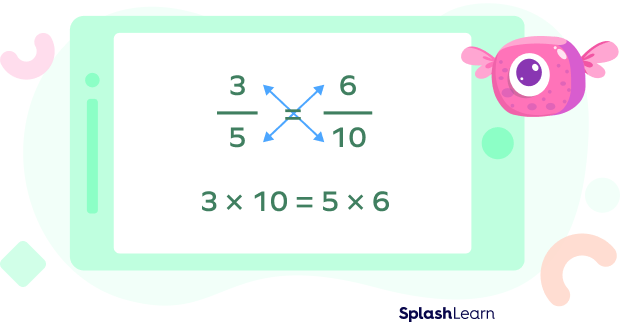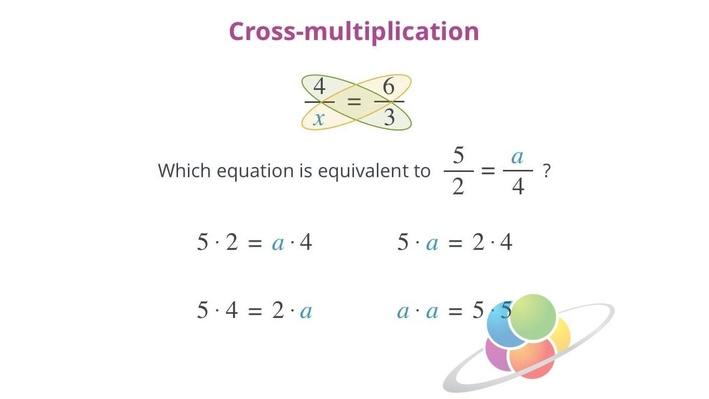In the realm of elementary mathematics, cross-multiplication and division stand as two fundamental operations that serve as essential tools for problem-solving. Understanding these concepts empowers individuals to navigate numerical challenges with ease and precision. This article aims to provide a comprehensive guide to cross-multiplication and division, unlocking the secrets of these mathematical operations.

Image: www.splashlearn.com
Defining Cross-Multiplication and Division
Cross-multiplication is a method used to solve proportions, which are equations that express the equality of two ratios. It involves multiplying the numerator of one fraction by the denominator of the other fraction and vice versa. For example, in the proportion 2/3 = 4/6, cross-multiplying yields 2 x 6 = 3 x 4, which simplifies to 12 = 12, confirming the equality.
Division, on the other hand, is the process of finding how many times one number (the divisor) can be subtracted from another number (the dividend) until there is no remainder. For instance, in the division problem 10 ÷ 5, the divisor (5) is repeatedly subtracted from the dividend (10), resulting in a quotient of 2 and no remainder.
Cross-Multiplying: A Path to Proportional Harmony
Cross-multiplication plays a pivotal role in solving proportions. It allows us to establish equalities between two ratios, enabling us to determine unknown values. Consider the proportion 1/4 = x/8. Cross-multiplying results in 1 x 8 = 4 x x, which can be simplified to 8 = 4x. Dividing both sides by 4, we solve for x, obtaining x = 2.
Division: Exploring the Essence of Fair Distribution
Division finds its place in a myriad of relatable scenarios. Whether it’s distributing a batch of cookies equally among friends or calculating the average score of a class, division allows us to divide a whole into equal parts. In the equation 12 ÷ 3 = 4, the dividend (12) represents the total number of cookies, while the divisor (3) indicates the number of people sharing them. The quotient (4) tells us that each person receives four cookies.

Image: pbslearningmedia.org
Practical Applications: Empowering Everyday Decisions
Cross-multiplication and division are not mere theoretical concepts; they permeate our daily lives, aiding us in making informed decisions. From calculating discounts and measuring ingredients to estimating travel time, these operations provide a bedrock of mathematical prowess for everyday problem-solving.
Expert Insights: Harnessing Knowledge from Masters
Renowned mathematician Pythagoras once proclaimed, “Mathematics is not about numbers, equations, computations, or algorithms: it is about understanding.” He believed that mathematics provided a lens through which we could perceive the underlying patterns and relationships that govern our universe.
In the context of cross-multiplication and division, experts emphasize the importance of understanding the underlying principles rather than merely memorizing rote procedures. By grasping the essence of these operations, we gain a deeper appreciation for their power and versatility.
How Do You Cross Multiply And Divide
Conclusion: Unlocking the Power of Mathematical Precision
Cross-multiplication and division are indispensable tools in the mathematical toolkit, empowering us to tackle a wide range of problems with confidence and accuracy. By embracing these concepts and their practical applications, we unlock a gateway to expanded problem-solving abilities.
As the Roman philosopher Marcus Aurelius once said, “The impediment to action advances action. What stands in the way becomes the way.” Let us embrace the sfida (challenge) of cross-multiplication and division, empowering ourselves with the mathematical prowess to navigate life’s numerical intricacies with grace and efficiency.


/GettyImages-1303637-two-way-mirror-57126b585f9b588cc2ed8a7b-5b8ef296c9e77c0050809a9a.jpg?w=740&resize=740,414&ssl=1)


